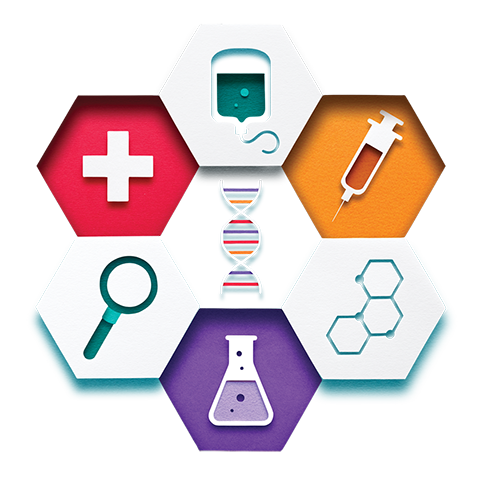More Research Needed For Neuropathy

Chemotherapy-induced peripheral neuropathy (also known as CIPN)—a numbness, burning, tingling, and pain felt in the hands or feet—is a common side effect of certain pancreatic cancer treatment regimens.
Neuropathy can either be a minor annoyance or a potentially miserable and often treatment-limiting side effect. The discomfort is such that patients and their doctors may abandon a drug or alter a regimen in favor of one less likely to cause neuropathy.
Most pancreatic cancer tumors are too advanced at diagnosis for resection, leaving chemotherapy as the mainstay of treatment. Overall survival among those receiving chemotherapy for pancreatic cancer has been inching upward, mostly due to chemotherapeutic regimens like the combination of 5-fluorouracil, oxaliplatin, irinotecan, and leucovorin (FOLFIRINOX) or gemcitabine plus nab-paclitaxel. But both oxaliplatin and paclitaxel are neurotoxic agents and, unfortunately, peripheral neuropathy is a fairly common side effect, explains gastrointestinal oncologist Allyson Ocean, M.D., co-author of the paper “Chemotherapy-Induced Peripheral Neuropathy: Pathogenesis and Emerging Therapies,” published in the journal Supportive Care in Cancer. “We grade the neuropathy-based severity and no two cases are ever the same,” adds Ocean, associate professor of Medicine at Weill Cornell Medicine.
Although cases may vary, “what patients want is relief and they want something to relieve the ‘pins and needles’ or the pain or the numbness,” she explains. For example, in a retrospective examination of 120 patients with pancreatic cancer who received nab-paclitaxel as first-line therapy, 60 percent had CIPN of any grade. Of those taking duloxetine (Cymbalta), a drug approved to treat depression and anxiety, to help with neuropathy, CIPN improved or did not worsen in approximately 50 percent of patients.
“Unfortunately, although we can help some patients by changing regimens if it’s warranted, and some drugs like duloxetine have been shown to ease symptoms, patients are sometimes reluctant to take a drug like that because of stigma, which is unfortunate,” Ocean notes.
When that happens, patients turn to alternative approaches, such as supplements. One of the most popular and most often asked about is an amino acid called glutamine. “I get asked about glutamine quite a bit,” she says. “We don’t know a lot about glutamine’s effects, but what we do know points to it being somewhat positive.”
What Is Glutamine?
Glutamine is simply an amino acid. It is absorbed from food and then synthesized and stored, mainly in the muscles and lungs. As an amino acid, it is one of the building blocks of proteins and a major source of fuel for cells. In oncology settings, there are a few studies suggesting glutamine or its derivatives are useful against peripheral neuropathy.
In one non-randomized study, researchers looked at neurologic signs and symptoms and changes in nerve-conduction studies in 46 patients given high-dose paclitaxel either with or without glutamine. Neurological assessments and electrodiagnostic studies were carried out at baseline and at least two weeks after treatment. Patients who received glutamine had significantly less weakness, less loss of vibratory sensation, and less toe numbness than controls. The percent of change in the compound motor action potential and sensory nerve action potential amplitudes after paclitaxel treatment was lower in the glutamine group, but this finding was not statistically significant in these small groups.
The researchers suggest that serial neurologic assessment of patient symptoms and signs seemed to be a better indicator of a possible glutamine effect than sensory or motor nerve conduction studies. But clearly, prospective randomized trials are needed to clarify the effect of glutamine on paclitaxel and other types of chemotherapy-induced neuropathy.
In another study, patients entered a high-dose chemotherapy protocol in which the first high-dose cycle was paclitaxel given over 24 hours. The first cohort of patients did not receive glutamine, and the second cohort of patients received 10g of glutamine orally three times a day for four days, starting 24 hours after completion of paclitaxel. Neurological assessment was performed at baseline, and at least two weeks after paclitaxel, and consisted of a complete neurological exam and nerve conduction studies.
For patients who received glutamine, there was a statistically significant reduction in the severity of peripheral neuropathy as measured by development of moderate to severe distortion in the sense of touch and numbness in the fingers and toes. There was a reduction in the degree and incidence of motor weakness and less deterioration in gait and interference with activities of daily living. Moderate to severe burning and prickling in the fingers and toes were also reduced, although this value was not statistically significant. All of these symptoms were reversible over time.
The researchers concluded that glutamine may reduce the severity of peripheral neuropathy associated with high-dose paclitaxel; however, results from randomized, placebo-controlled clinical trials will be needed to fully assess its impact.
Using Glutamine
“I’m pleased when patients ask me about glutamine because that, at a minimum, means they aren’t going to do something just because they read about it on the internet and they understand that even though something is a supplement, supplements can, in some cases, cause problems,” Ocean says. However, she doesn’t believe that glutamine is a problem, although she does hope there will be larger, well-designed studies. “I don’t have concerns and I have absolutely no hesitation in telling patients to try it if they want to,” she adds. But she also informs them that benefits may be minimal. One issue, she says, is that dietary supplements are regulated by the FDA as food, not as drugs. And some dietary supplements contain ingredients that may adversely affect treatment regimens or exacerbate a medical condition.
In general, drug treatment for peripheral neuropathy includes steroids, numbing medications, low-dose antidepressants, and anti-seizure medications. If pain is severe, short-term opioids or narcotics may be used. Doctors are also exploring the use of guided imagery, relaxation therapy, acupuncture, and biofeedback. Occupational and physical therapy may also help.
“Patients need a good quality of life and neuropathy can, in some cases, just make what already is a very difficult time that much harder,” Ocean says. “The good news is that generally we can find some combination of treatments that can help. And neuropathy is generally reversed when treatment stops. But there’s still a good 20 percent of patients for whom that doesn’t happen.
“What we need are better studies on chemotherapy-induced peripheral neuropathy in terms of treatment. Right now, there just isn’t all that much.”






